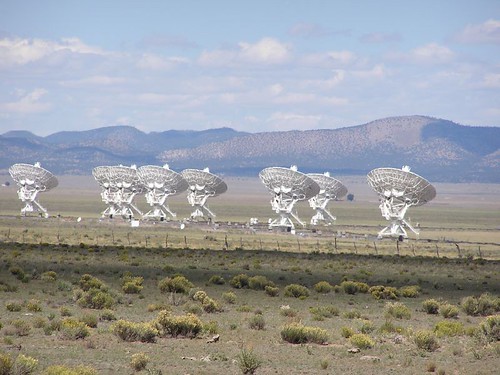[mjh: photo above is mine; article below is not mine.]
For me, the radio telescopes [of the Very Large Array] beat the pyramids of Egypt, the Great Wall of China and other wonders in awesomeness, poignancy and respect for the Homo sapiens endeavor. That’s no exaggeration.
I remember being struck speechless the first time I emerged from the trees along U.S. 60 and saw the dishes of the VLA – cocked attentively, like huge, mechanical white poppies, toward the vastness of space. It was 1980, the year the VLA was officially dedicated. In 2006, its power to observe and astonish is increasing, as it undertakes ongoing upgrades and expansions.
The contrast the dishes make with the remote, desolate Plains of San Augustin is stunning.
The plains are the remains of a broad, Pleistocene Era lake, and they look it, in all their post-glacial serenity. The hills and trees that ring it and the gently rolling lake bed itself are made by nature – random, ragged, simple, solemnly gorgeous and content to be exactly what they are.
The dishes, 82 feet wide and nearly as tall as 10-story buildings when pointing straight up, cut across the skyline like a precision blade. There are 27 of them, arranged along railroad tracks in a Y-shaped configuration that can grow to 22 miles in diameter when fully extended. Anything but random, they focus in unison on unseen objects, with an unearthly intensity.
The array is mankind’s most dramatic, visible connection with the infinite. …

